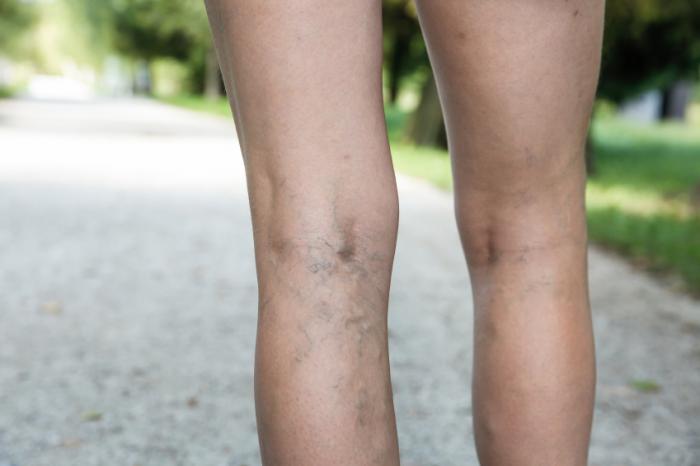Varicose veins are widespread; about 10-20% of men and 2/3 of all women develop identifiable varicosities. Severe vein problems are found in 20% of working adults. Signs and symptoms can range from:
- Minor: including the undesirable sight of small spider veins and mild discomfort.
- Moderate: including noticeable varicosities associated with aching and swollen legs at the end of the day.
- Severe: including large varicosities with skin changes and even open wounds.
Often patients wonder why they develop varicose veins in their legs and what they are in the first place. With every beat of the heart, blood is pumped into arteries which take the blood to the legs and feet. Blood is returned to the heart through the veins of the legs. It’s a long trip around for the blood and when a person is standing up the heart needs some help getting the blood back through the veins. There are valves in the veins which prevent the blood from traveling back down to the feet when the heart relaxes. Over time, if the valves in the leg don’t work, elevated pressures cause the veins to enlarge and become tortuous leading to varicosities.
Faulty vein valves can lead to leg swelling and pain, which is usually worse at the end of the day or after standing all day. Walking helps with vein problems because muscles pump blood out of the leg. Other factors associated with vein problems are:
- Age: Unfortunately there is no medicine to prevent weakening of the walls of veins that occur naturally with age.
- Pregnancy: Hormones and increased intra-abdominal pressure can lead to varicose veins. Usually these veins improve in appearance by a few months after delivery.
- Family history: Often time’s patients with varicose veins note that their parents, siblings, or children also have varicose veins.
There are two sets of veins with the main set of veins called the deep veins that runs between the bones of the legs and the muscles. The second sets of veins are called the superficial veins which run between the muscles and the skin mostly along the inner part of the leg. Superficial veins are usually where the valves don’t work well, and elevated pressure in these veins can lead to skin discoloration. Over time, elevated pressure and slow flow in the veins can lead to severe problems with veins including:
- “Superficial venous thrombosis” or clots developing in small veins. These usually do not have a risk of traveling to the lungs.
- Skin breakdown or ulcers.
- Spontaneous bleeding which is usually not life threatening but is very dramatic.
An alternate cause of leg swelling in patients is a deep vein thrombosis or DVT. In the acute setting, this can be manifested by rapid new onset of pain and swelling in the leg and is a medical emergency because the DVT can travel to the lungs and cause a threat to the patient’s life. If a DVT is treated by blood thinners to prevent life threatening problems, the scarring after a DVT heals can lead to vein narrowing which causes chronic leg swelling. Other causes of leg swelling include congestive heart failure, which usually affects both legs. Another cause of leg swelling is lymphedema, which is a topic to explain in another post.
In the end, it is hard for me to give firm advice about when to see a doctor about leg vein problems because my philosophy is that if there is any concern about anything medically related then I am happy to evaluate the concerns. However, some guidelines are that if symptoms are in the moderate or severe range described above, then an evaluation is certainly warranted. Specifically, these are signs and symptoms of noticeable varicosities associated with aching and swollen legs at the end of the day or large varicosities with skin changes and even open wounds. Small spider veins without leg pain or swelling is usually not that significant to the overall health of the patient. The spider veins are usually considered for cosmetic treatment.


